Gertrud Kolmar's Lyrical Body
"You hear me speak. But do you hear me feel?"
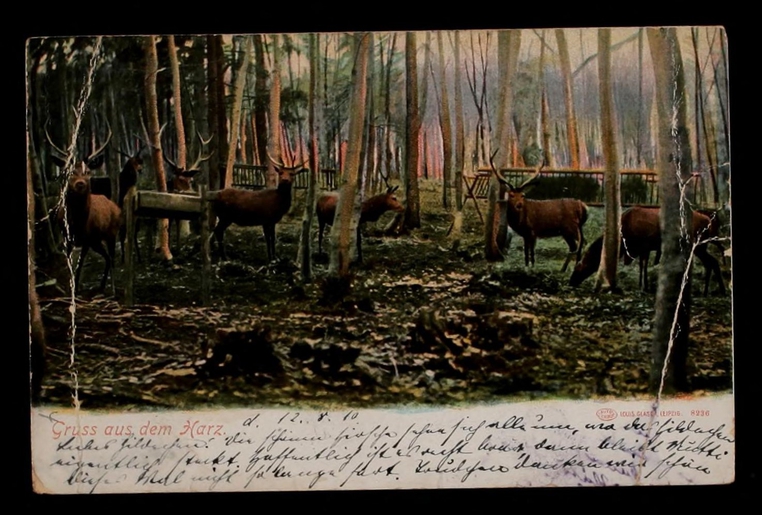
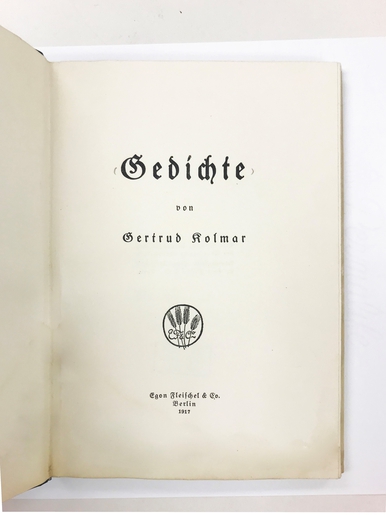
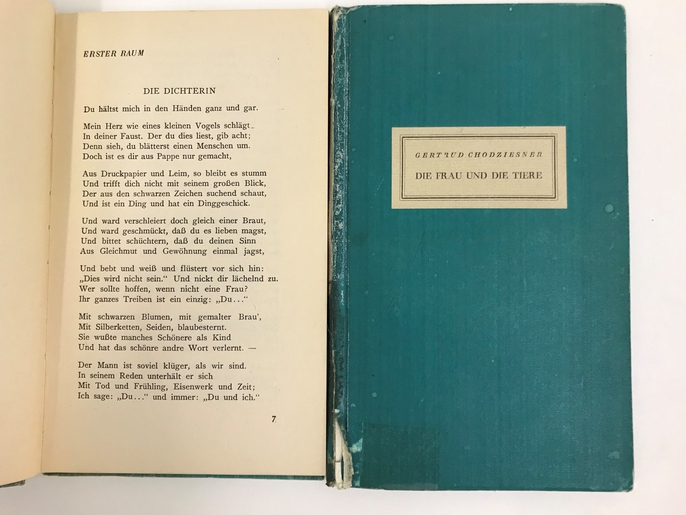
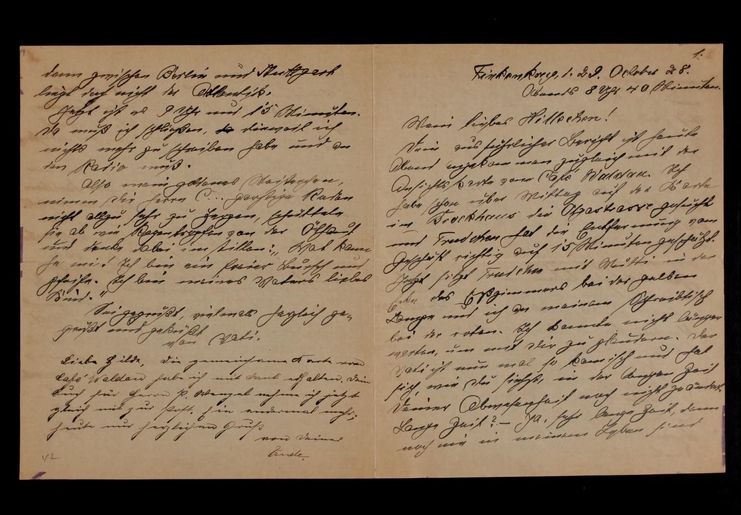
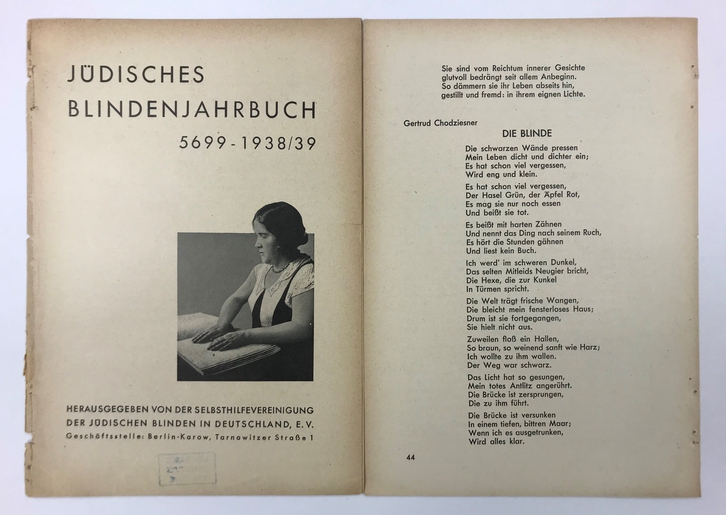
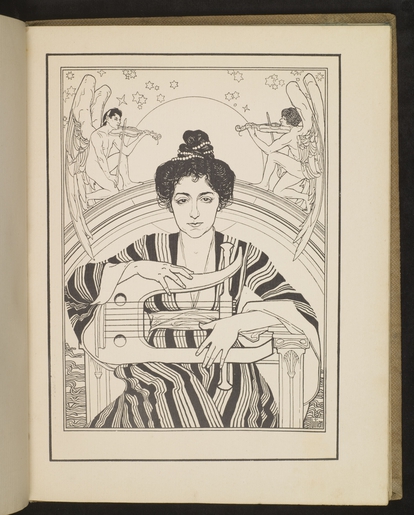
Ich kann das begrabene Ur der Chaldäer
Vielleicht endecken noch irgendwo,
Den Götzen Dagon, das Zelt der Hebräer,
Die Posaune von Jericho.
Perhaps somewhere I can unearth
The burried Ur of the Chaldeans,
The idol Dagon, Hebrew tents,
Or the horn of Jericho.
The poet Gertrud Chodziesner (known better by her penname Gertrud Kolmar) has been called by writer Jacob Picard 'one of the most important woman poets' in the whole of German literature, and 'the greatest lyrical poetess of Jewish descent who has ever lived'. But she was largely unknown when she was deported to the Auschwitz death camp in 1943 and murdered.
Gertrud was only first truly “discovered” in April 1936 – just as Jewish life was becoming increasingly constrained under Nazi law – when she was introduced alongside Nelly Sachs and Else Lasker-Schüler at a recital of “Frauendichtung” (women’s prose”) held by Erna Feld Leonhard. By then middle-aged, unwed, and childless, Getrud Kolmar had remained relatively unknown in the literary world, despite two small volumes published previously (Gedichte, 1917 and Preussische Wappenbuch, 1934) and the support of her well-known cousin, Walter Benjamin. The poet Jacob Picard described her powerful verses (rather chauvinistically) as “crystalline in their rigor and form, and at the same time spare and pure in their intellectual and emotional quality, to a degree that we otherwise find only in the work of men …”
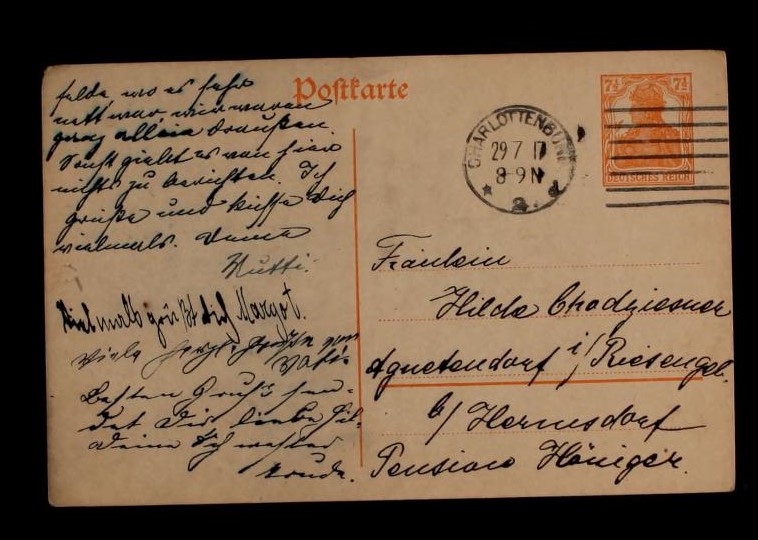
After the Holocaust, her work was revived through the efforts of German literary personalities like Jacob Picard; her sister, Hilde Wenzel; and her sister’s former, husband Peter Wenzel. Her poetry collection Welten (published in 1947) as well as the novella Susanna (published in 1959 in Das leere Haus) survived through her correspondence with her sister Hilde Wenzel, who was able to flee to Switzerland.
While the largest body of Gerturd Kolmar's correspondence – specifically her letters to her sister Hilde - is held by the Germany Literary Archive in Marbach, LBI’s Archives has a small collection of letters written from 1906 to 1929 by Gertrud’s mother, Elise, to her sister, Hilde Wenzel. This collection of correspondence documented some of the daily activities of Chodziesners’ family life. Elise Chodziesner wrote often of the family ducks and beloved dog, the weather; visits from aunts, uncles, and close friends; the care and maintenance of clothing; and family walks in nature.
Gertrud often appeared in the letters, sharing blueberries with her sister Margot, caring for the family dog, or accompanying her mother to the market. Greetings and notes from other family members like Gertrud were added at the end or even upside down in the margins. Elise’s letters showed there were many differences between Gertrud and herself (Elise frequently wrote of clothing and fashion, things Gertrud seemed to have taken little interest in), but the letters also indicated a shared love for walks in outdoors and as well as for the care of the family dogs and ducks.
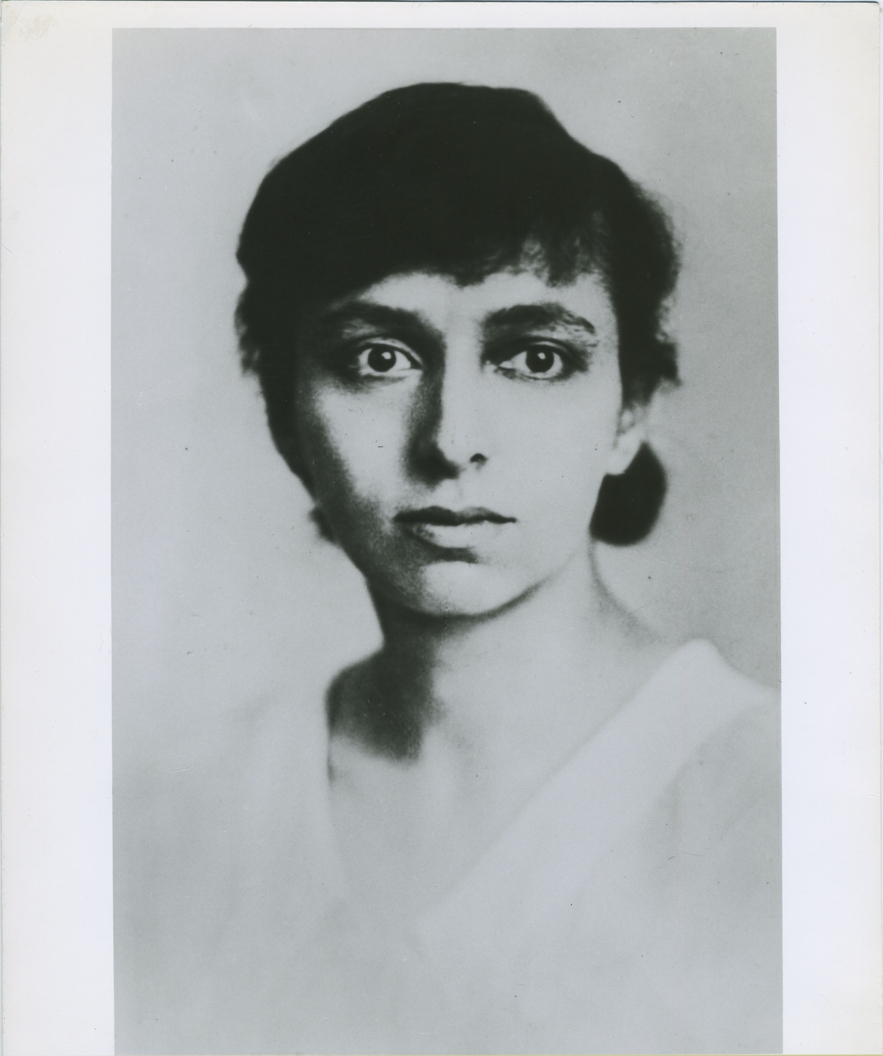
Described as a somewhat shy, sensitive young girl, Gertrud Kolmar was born in 1894 into assimilated Jewish family in Berlin. Her father, Ludwig Chodziesner, was a successful lawyer, and she grew up in the affluent Westend neighborhood of Berlin. Throughout her childhood and adolescence, she loved to write, both fiction and prose, but did not share them outside the family. Most of them were secreted away in a box in her room. She performed most of the household chores and was quite dutiful, if not a bit too quiet and somewhat odd. Her relatives called her "Crazy Trude" but this didn't seem to be because of loud and emotional behavior as much as that of a shy, introverted person living in her own world.
Gertrud attended school for the domestic arts, a typical education for bourgeoise Jewish women in Berlin at the time. But she also took her education a step farther and received a teaching degree. She was very skilled in languages, and spoke French, Russian, Czech, Spanish, Flemish, and, later in life, Hebrew.
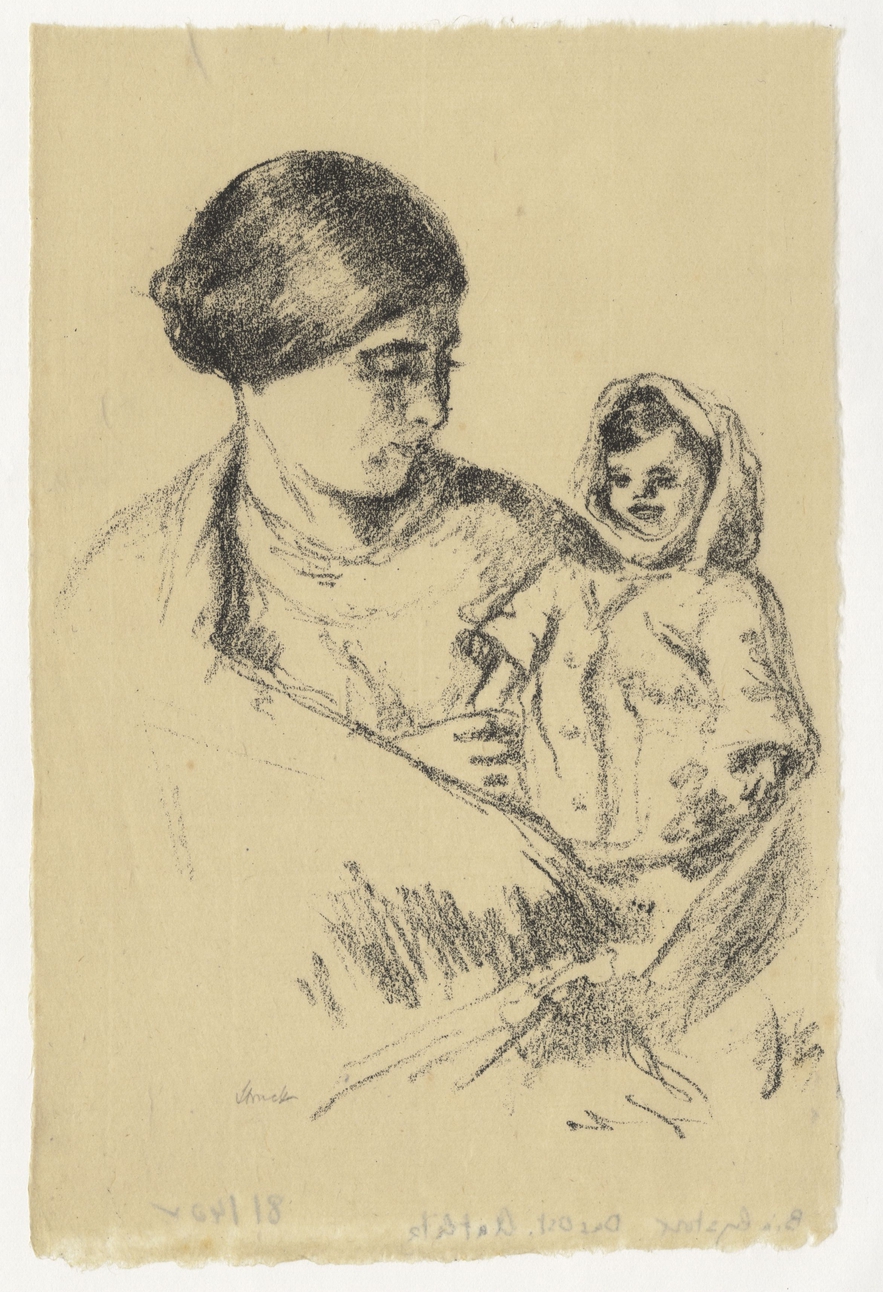
By this time World War I was underway, and Gertrud had fallen in love. The object of her affection was Karl Jodel, a German officer. The affair proved short-lived and with unhappy consequences. Although there is no written documentation, her sister and many scholars speculate that in the fall of 1916 Kolmar found herself pregnant. By then, Jodel had left her, and she had to confess her pregnancy to very unhappy parents who forced her to have an abortion. In January 1917, Kolmar, accompanied by her mother, was forced to recuperate in a hospital after a suicide attempt.
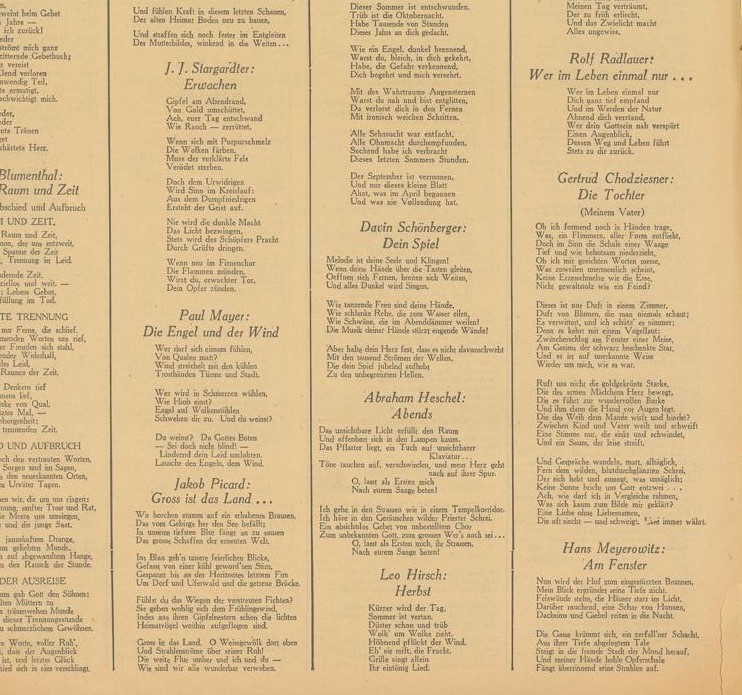
Kolmar’s first book of poetry was published around this time after her father stole her poetry from her desk and shared it with a publisher. Her first published book of poems started her life as a poet, but she was never very successful or well-known outside of literary circles. Her poetry writing continued mostly as a private affair, and it was perhaps with even a certain lack of enthusiasm that she took part in the very public world of publishing her work. She once stated that for her, poetry came not out of a place of elation and strength, but out of a feeling of powerlessness. After her literary “debut” with the “Frauendichtung” evening and the subsequent publication in several Jewish newspapers in the late 1930s, she described in a letter to Jacob Picard how she felt after seeing her name in the paper next to the name of the author Dostoevsky; "Do you know how I felt? It's difficult to describe - but maybe that's how Andersen's 'ugly duckling' felt when he finally got among the swans and the water, as a mirror, showed him that he was a swan himself....." In another letter, she wrote: "....even if I were proclaimed the most important Jewish poet since Else Lasker-Schüler, this wouldn't excite me very much. Dad would be happier for me."
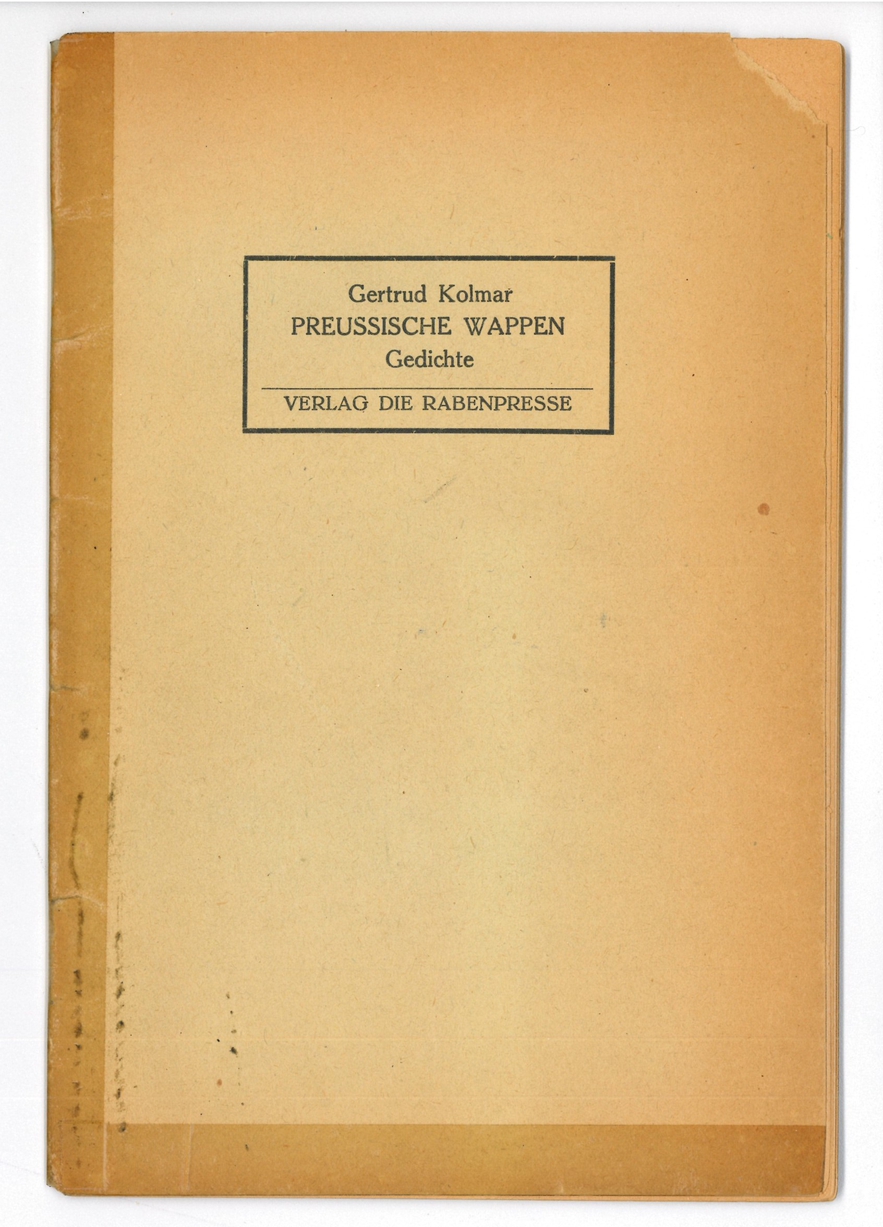
Kolmar’s poetry invited the reader into her inner world to experience feelings of love, loneliness, and longing. These internalized experiences were primarily embodied through female figures and nature - men are rarely direct participants in any text. In her prose, men often serve as antagonists in the lives of women, dangerous beings that visit the feminine sphere to bring possible joy, but more often loss and the pain of loneliness and childless motherhood; many scholars connect the feelings in Kolmar’s poetry of agonizing heartbreak and yearning for a child to Kolmar’s own traumatic breakup and subsequent forced abortion.
An excellent example of this is her poem "Die Dichterin" or "The Poetess" a poem she wrote around 1930. Throughout the 1920’s she had held many teaching positions, but by 1928, when she began assisting her sick mother at her parents’ new home in Finkenkrug, she had transformed from a young woman of marriageable age into a spinster living with her family. She cared for her aging parents, and after her mother’s death, helped her elderly father run the household, an oft-expected obligation of an unmarried child. (It is perhaps extra poignant in the fact that, by today's standards, she certainly was still a young woman, only in her early thirties.)
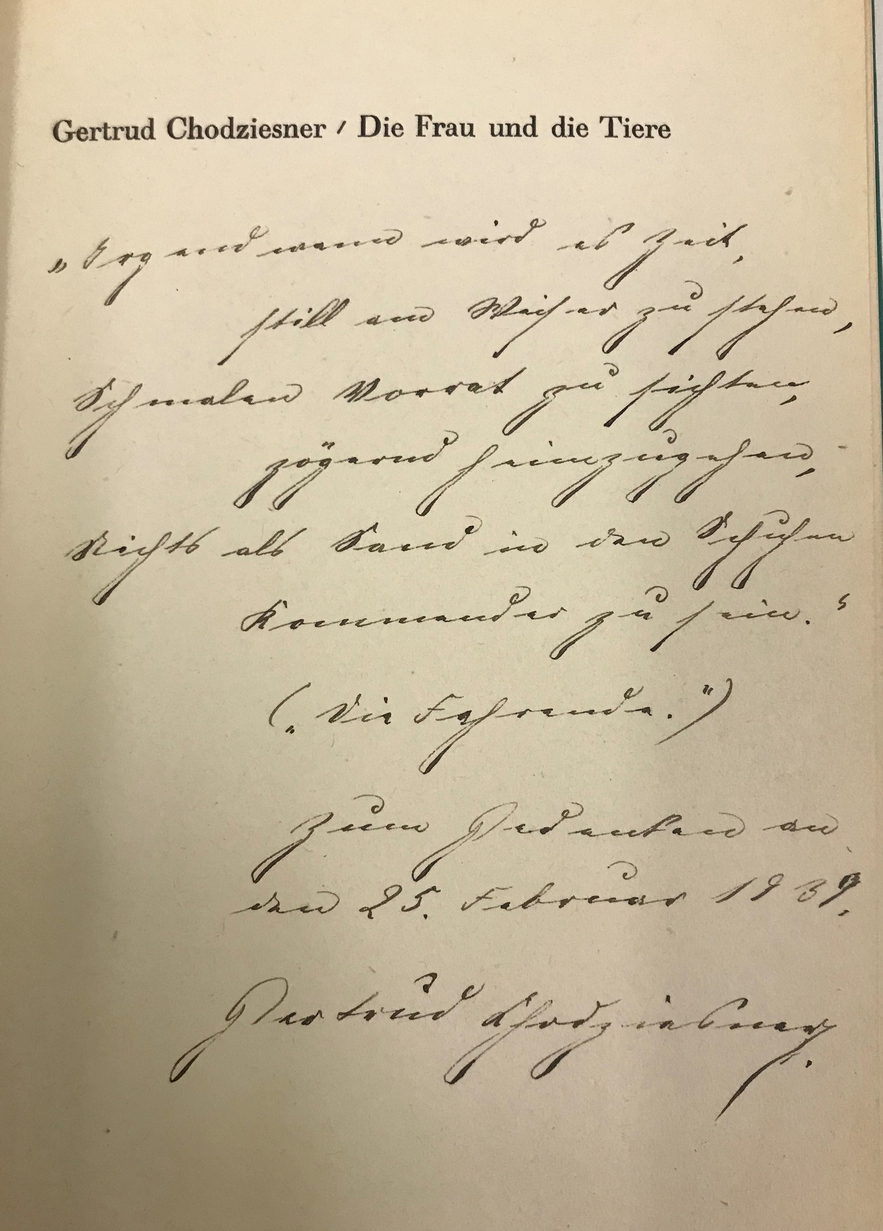
In "The Poetess" Kolmar in a sense transforms a book of poetry into a speaking female body. The poems are identified as the clothing of the body, and the entire physical book as the woman speaking, both physically and emotionally. The book is in the hands of a man - indeed, she has offered herself to him. The poem can be read in multiple contexts: as a pair of lovers, yes, but one where the man might also prove dangerous, tearing pages and causing harm. Further, as a woman poet in a man's literary world, it can also be read as the struggles of women authors to be recognized and approved of by their male critics and authority figures.
The Poetess
You hold me now completely in your hands.
My heart beats like a frightened little bird's
Against your palm. Take heed! You do not think
A person lives within the page you thumb.
To you this book is paper, cloth, and ink,
Some binding thread and glue, and thus is dumb,
And cannot touch you (though the gaze be great
That seeks you from the printed marks inside),
And is an object with an object's fate.
And yet it has been veiled like a bride,
Adorned with gems, made ready to be loved,
Who asks you bashfully to change your mind,
To wake yourself, and feel, and to be moved.
But still she trembles, whispering to the wind:
"This shall not be." And smiles as if she knew.
Yet she must hope. A woman always tries,
Her very life is but a single "You . . ."
With her black flowers and her painted eyes,
With silver chains and silks of spangled blue.
She knew more beauty when a child and free,
But now forgets the better words she knew.
A man is so much cleverer than we,
Conversing with himself of truth and lie,
Of death and spring and iron-work and time.
But I say "you" and always "you and I."
This book is but a girl's dress in rhyme,
Which can be rich and red, or poor and pale,
Which may be wrinkled, but with gentle hands,
And only may be torn by loving nails.
So then, to tell my story, here I stand.
The dress's tint, though bleached in bitter lye,
Has not all washed away. It still is real.
I call then with a thin, ethereal cry.
You hear me speak. But do you hear me feel?
Die Dichterin
Du hältst mich in den Händen ganz und gar.
Mein Herz wie eines kleinen Vogels schlägt
In deiner Faust. Der du dies liest, gib acht;
Denn sieh, du blätterst einen Menschen um.
Doch ist es dir aus Pappe nur gemacht,
Aus Druckpapier und Leim, so bleibt es stumm
Und trifft dich nicht mit seinem großen Blick,
Der aus den schwarzen Zeichen suchend schaut,
Und ist ein Ding und hat sein Dinggeschick.
Und ward verschleiert doch gleich einer Braut,
Und ward geschmückt, daß du es lieben magst,
Und bittet schüchtern, daß du deinen Sinn
Aus Gleichmut und Gewöhnung einmal jagst,
Und bebt und weiß und flüstert vor sich hin:
"Dies wird nicht sein." Und nickt dir lächelnd zu.
Wer sollte hoffen, wenn nicht eine Frau?
Ihr ganzes Treiben ist ein einzig: "Du..."
Mit schwarzen Blumen, mit gemalter Brau,
Mit Silberketten, Seiden, blaubesternt.
Sie wußte manches Schönere als Kind
Und hat das schöne andre Wort verlernt. -
Der Mann ist soviel klüger, als wir sind.
In seinen Reden unterhält er sich
Mit Tod und Frühling, Eisenwerk und Zeit;
Ich sage:"Du..." und immer:"Du und ich."
Und dieses Buch ist eines Mädchens Kleid,
Das reich und rot sein mag und ärmlich fahl,
Und immer unter liebem Finger nur
Zerknittern dulden will, Befleckung, Mal.
So steh ich, weisend, was mir widerfuhr;
Denn harte Lauge hat es wohl gebleicht,
Doch keine hat es gänzlich ausgespült.
So ruf ich dich. Mein Ruf ist dünn und leicht.
Du hörst, was spricht. Vernimmst du auch, was fühlt?
Following the Nazi seizure of power in 1933, siblings and relatives started to leave Germany. Gertrud was not an exception in her desire to flee the country, but she was also now taking care of her elderly father. An opportunity arose for her to move to England and work as a governess, but as a dutiful daughter she chose to stay behind with him in Germany. It was nearly impossible for the elderly to obtain visas to safety - in essence, she was choosing to stay behind with him though a visa for her to leave alone was possible.
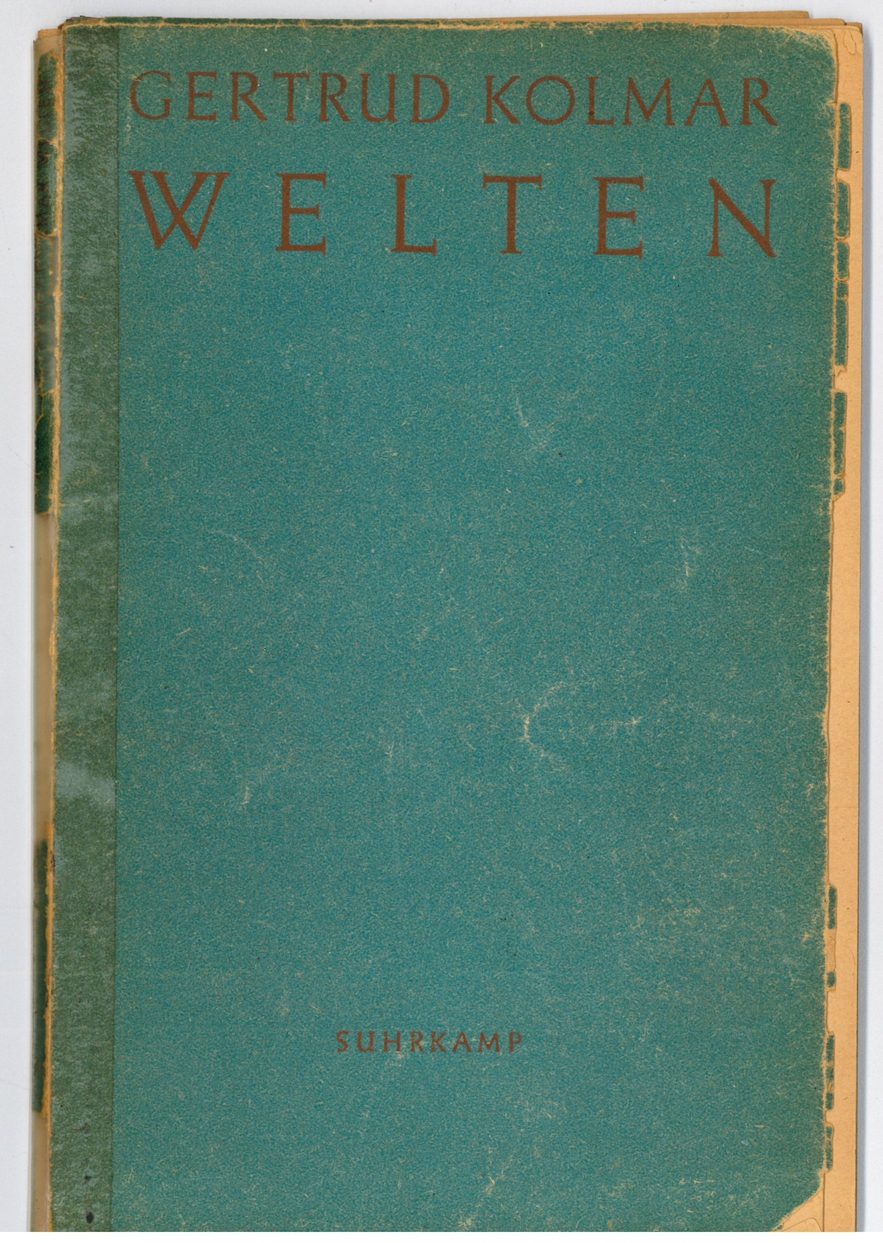
“The Poetess” appeared as part of the poetry cycle “Weibliches Bildness,” which was originally turned down by a publisher in 1932 but published by Jüdischer Buchverlag Erwin Loewe in August of 1938 in the book Die Frau und die Tiere. This poetry collection was the not only the last volume of her poetry to be published while she was alive, but its publication coincided with liquidation of Jewish publishers in Germany.
Shortly afterward came Kristallnacht. Her father was jailed for 4 days, after which they were forced to sell the family home in Finkenkrug and move to a cramped “Judenhaus,” the first of many ever-increasing hardships she would endure during the Holocaust. Gertrud then became forced labor in a munitions plant for the war effort, along with other Berlin Jews. Kolmar continued to write and kept up a correspondence with relatives, colleagues, and friends who were increasingly now abroad in the German-Jewish diaspora. At times, she expressed in her letters to these people an inner strength and reserve to continue despite the oppression that now was her daily existence.
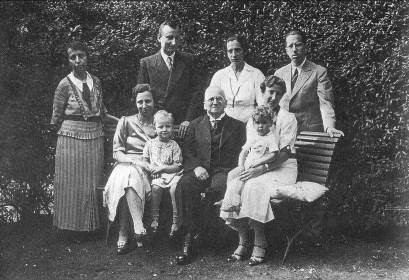
In September of 1942 her father was deported to the Theresienstadt Ghetto, where he died in February 1943. That same month the Nazis began roundups of those exempted from deportation up to this point due to their work in munitions and armament factories in Berlin. Gertrud Kolmar was taken in a deportation train to Auschwitz on March 2nd. Her final fate in the death camp is unknown.
Bibliography:
Eichmann-Leutenegger, Beatrice. Gertrud Kolmar : Leben und Werk in Texten und Bildern. Frankfurt am Main: Jüdischer Verlag, 1993.
Goldstein, Brigitte M. "Gertrud Kolmar (1894-1943) : German-Jewish Poetess." Modern Judaism, 15 (1995), pages 265-277.
Kolmar, Gertrud. Dark Soliloguy : the Selected Poems of Gertrud Kolmar. Translated and with an introduction by Henry A. Smith. New York: Seabury Press, 1975
Kolmar, Gertrud. Gertrud Kolmar: Das Lyrische Werk. Heidelberg L. Schneider, 1955.
Kolmar, Gertrud. My gaze is turned inward: letters, 1934-1943. Edited and with an afterword by Johanna Woltmann ; translated from the German and with a preface by Brigitte M. Goldstein. Evanston, IL : Northwestern University Press, 2004.
Krick-Aigner, Kirsten. Gertrud Kolmar: 1894-1943. Jewish Women's Archive. https://jwa.org/encyclopedia/article/kolmar-gertrud. Accessed May 10, 2021.
Quack, Sibylle. Cora Berliner, Gertrud Kolmar, Hannah Arendt : Strassen am Denkmal ehren ihr Andenken. Teetz : Hentrich & Hentrich ; Berlin : Stiftung Neue Synagoge Berlin, Centrum Judaicum, 2005.
Woltmann, Johanna. Gertrud Kolmar : Leben und Werk. Göttingen : Wallstein Verlag, 1995.
"The Woman Poet - Translation of Die Dichterin." Allpoetry.com. https://allpoetry.com/The-Woman-Poet-----Translation-of-Die-Dichterin. Accessed May 10, 2021.
Transcription and translation of Elise Chodziesner's letters from Dianne Ritchey, Tracey Felder, Michael Simonson, Lauren Paustian, and Renate Evers.